-
 Bitcoin
Bitcoin $106,754.6083
1.33% -
 Ethereum
Ethereum $2,625.8249
3.80% -
 Tether USDt
Tether USDt $1.0001
-0.03% -
 XRP
XRP $2.1891
1.67% -
 BNB
BNB $654.5220
0.66% -
 Solana
Solana $156.9428
7.28% -
 USDC
USDC $0.9998
0.00% -
 Dogecoin
Dogecoin $0.1780
1.14% -
 TRON
TRON $0.2706
-0.16% -
 Cardano
Cardano $0.6470
2.77% -
 Hyperliquid
Hyperliquid $44.6467
10.24% -
 Sui
Sui $3.1128
3.86% -
 Bitcoin Cash
Bitcoin Cash $455.7646
3.00% -
 Chainlink
Chainlink $13.6858
4.08% -
 UNUS SED LEO
UNUS SED LEO $9.2682
0.21% -
 Avalanche
Avalanche $19.7433
3.79% -
 Stellar
Stellar $0.2616
1.64% -
 Toncoin
Toncoin $3.0222
2.19% -
 Shiba Inu
Shiba Inu $0.0...01220
1.49% -
 Hedera
Hedera $0.1580
2.75% -
 Litecoin
Litecoin $87.4964
2.29% -
 Polkadot
Polkadot $3.8958
3.05% -
 Ethena USDe
Ethena USDe $1.0000
-0.04% -
 Monero
Monero $317.2263
0.26% -
 Bitget Token
Bitget Token $4.5985
1.68% -
 Dai
Dai $0.9999
0.00% -
 Pepe
Pepe $0.0...01140
2.44% -
 Uniswap
Uniswap $7.6065
5.29% -
 Pi
Pi $0.6042
-2.00% -
 Aave
Aave $289.6343
6.02%
How to solve the abnormal price of OKX contract liquidation?
Avoid OKX contract liquidations by using low leverage, monitoring positions closely, setting stop-losses, and diversifying. Dispute potentially erroneous liquidations with OKX support, providing detailed evidence.
Mar 25, 2025 at 11:56 am
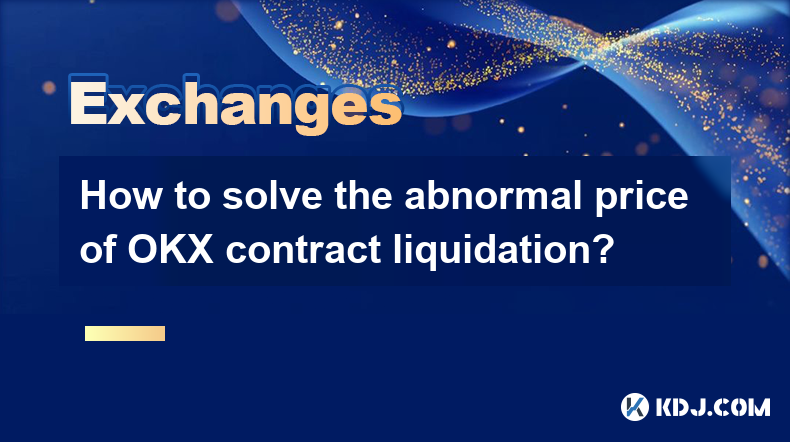
Key Points:
- Understanding the factors contributing to OKX contract liquidation, including market volatility, leverage, and margin calls.
- Strategies for mitigating the risk of abnormal liquidation, focusing on responsible leverage usage and risk management techniques.
- Examining potential technical glitches or platform issues that might lead to unusual liquidation events and how to address them.
- Exploring dispute resolution channels offered by OKX in case of suspected erroneous liquidations.
- Analyzing the role of accurate market analysis and order management in preventing unexpected liquidations.
How to Solve the Abnormal Price of OKX Contract Liquidation?
The cryptocurrency market is notoriously volatile, and this volatility is amplified in the derivatives market, particularly in perpetual contracts offered by exchanges like OKX. Liquidation, the forced closure of a leveraged position when the margin falls below the maintenance margin requirement, is an inherent risk. However, sometimes liquidations occur at prices seemingly deviating from the prevailing market price, leading to disputes and losses. Understanding the reasons behind these “abnormal” liquidations is crucial for traders.
One primary factor contributing to perceived abnormal liquidations is the speed and intensity of market movements. A sudden, sharp price drop can trigger a liquidation even if the underlying asset's price briefly touches the liquidation level before rebounding. The exchange's liquidation engine operates automatically, reacting to real-time market data; a momentary price spike, even a flash crash, might be sufficient to trigger the process.
The leverage applied to a position significantly influences the likelihood of liquidation. Higher leverage magnifies both profits and losses. While offering the potential for substantial gains, high leverage dramatically increases vulnerability to liquidation, especially during volatile market conditions. Using less leverage directly reduces the risk of liquidation, even with significant price swings.
Another key factor is the margin call. This is a warning that your position's margin is nearing the maintenance margin. Responding promptly to a margin call is vital. Failing to add more funds or reduce your position size can lead to forced liquidation, often at an unfavorable price. Monitoring your position closely and having a plan for margin calls is essential risk management.
Sometimes, technical glitches or platform issues can contribute to unusual liquidation events. These can range from temporary connectivity problems affecting data feeds to rare bugs within the exchange's trading engine. While relatively infrequent, these glitches can lead to liquidations at prices that don't reflect the true market value. In such instances, contacting OKX support to investigate and potentially dispute the liquidation is crucial.
Accurate market analysis is paramount in preventing unexpected liquidations. Thorough research, understanding market sentiment, and utilizing technical and fundamental analysis can help traders make informed decisions regarding position sizing and leverage. This proactive approach minimizes the chance of being caught off guard by sudden price movements.
Effective order management plays a crucial role. Setting stop-loss orders at appropriate levels can help limit potential losses and prevent liquidation at severely unfavorable prices. Stop-loss orders automatically sell your position when the price reaches a predetermined level, offering a safety net against extreme market fluctuations. However, slippage – the difference between the expected and executed price – can still occur, especially during high volatility.
Understanding the specifics of OKX's liquidation mechanism is vital. Familiarize yourself with their terms and conditions regarding liquidation, including how the liquidation price is determined and the order of liquidation for multiple positions. This knowledge helps in anticipating potential issues and mitigating risks.
Furthermore, maintaining a diversified portfolio can reduce the impact of a single position's liquidation. Don't put all your eggs in one basket. Spread your investments across different assets to lessen the overall risk exposure. This reduces the likelihood that a single unfavorable event will wipe out your entire portfolio.
Should you believe your liquidation was abnormal due to a technical glitch or platform error, OKX provides dispute resolution channels. Carefully document the event, including timestamps, price charts, and any communication with support staff. Presenting a strong case with supporting evidence increases your chances of a favorable outcome. However, remember that resolving disputes can be time-consuming.
Frequently Asked Questions:
Q: What is the maintenance margin on OKX?
A: The maintenance margin on OKX varies depending on the specific contract and market conditions. It's usually expressed as a percentage of the contract's value and is dynamically adjusted by OKX. Check the contract specifications before trading.
Q: How can I avoid liquidation on OKX?
A: Use lower leverage, actively monitor your positions, set stop-loss orders, and diversify your portfolio. Also, stay informed about market conditions and respond promptly to margin calls.
Q: What if I believe my OKX liquidation was erroneous?
A: Contact OKX support immediately, providing detailed evidence such as screenshots and timestamps. They have a dispute resolution process, though the outcome is not guaranteed.
Q: Does OKX offer any tools to help manage risk?
A: Yes, OKX offers tools like stop-loss and take-profit orders to manage risk. They also provide real-time market data and charting tools to aid in informed decision-making. However, ultimately, risk management is the responsibility of the trader.
Q: Can I appeal a liquidation decision on OKX?
A: Yes, OKX has a process for appealing liquidation decisions, but it's crucial to provide substantial evidence supporting your claim of an erroneous liquidation. The success of an appeal depends on the validity of your claim and the evidence you present.
Disclaimer:info@kdj.com
The information provided is not trading advice. kdj.com does not assume any responsibility for any investments made based on the information provided in this article. Cryptocurrencies are highly volatile and it is highly recommended that you invest with caution after thorough research!
If you believe that the content used on this website infringes your copyright, please contact us immediately (info@kdj.com) and we will delete it promptly.
- Ruvi AI: The Next Binance Coin with Low Entry?
- 2025-06-19 06:25:13
- IP, Profits, Hype Fading: What's Next for Crypto?
- 2025-06-19 06:25:13
- Shiba Inu Who? Ruvi AI's Audited Token is the Real MVP
- 2025-06-19 06:45:13
- Litecoin's Hidden Setup: Is a 40% Rally Imminent?
- 2025-06-19 06:45:13
- Cryptos, Arctic Pablo & Deflationary Strategy: The Meme Coin Revolution
- 2025-06-19 07:05:13
- Cardano Price Prediction: Is Now the Time to Buy ADA?
- 2025-06-19 07:05:13
Related knowledge
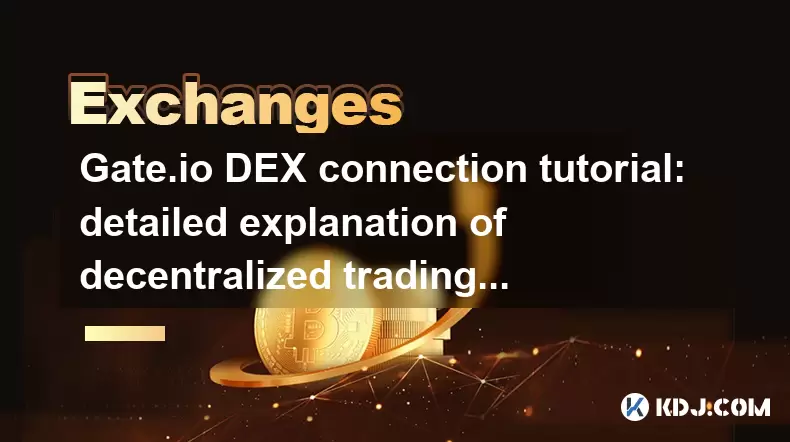
Gate.io DEX connection tutorial: detailed explanation of decentralized trading operation steps
Jun 12,2025 at 08:04pm
Connecting to Gate.io DEX: Understanding the BasicsBefore diving into the operational steps, it is crucial to understand what Gate.io DEX is and how it differs from centralized exchanges. Unlike traditional platforms where a central authority manages user funds and trades, Gate.io DEX operates on blockchain technology, allowing users to trade directly f...
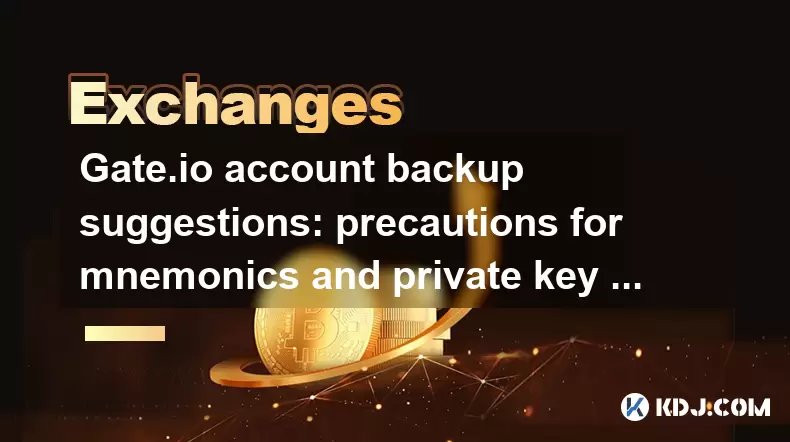
Gate.io account backup suggestions: precautions for mnemonics and private key storage
Jun 12,2025 at 10:56am
Understanding the Importance of Mnemonics and Private KeysIn the world of cryptocurrency, mnemonics and private keys are the core elements that grant users ownership over their digital assets. When using Gate.io or any other crypto exchange, understanding how to securely manage these components is crucial. A mnemonic phrase typically consists of 12 or 2...
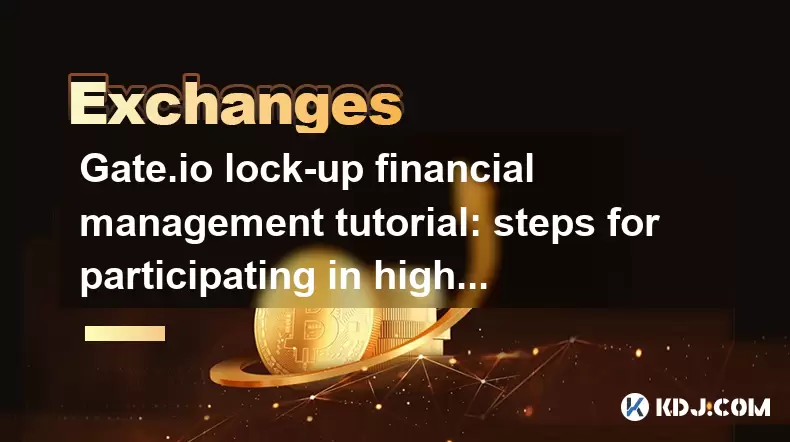
Gate.io lock-up financial management tutorial: steps for participating in high-yield projects and redemption
Jun 13,2025 at 12:43am
What Is Gate.io Lock-Up Financial Management?Gate.io is one of the world’s leading cryptocurrency exchanges, offering users a variety of financial products. Lock-up financial management refers to a type of investment product where users deposit their digital assets for a fixed period in exchange for interest or yield. These products are designed to prov...
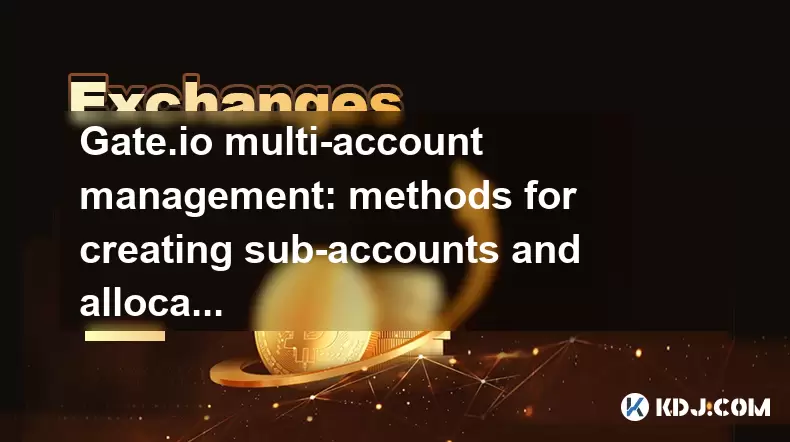
Gate.io multi-account management: methods for creating sub-accounts and allocating permissions
Jun 15,2025 at 03:42am
Creating Sub-Accounts on Gate.ioGate.io provides users with a robust multi-account management system that allows for the creation of sub-accounts under a main account. This feature is particularly useful for traders managing multiple portfolios or teams handling shared funds. To create a sub-account, log in to your Gate.io account and navigate to the 'S...
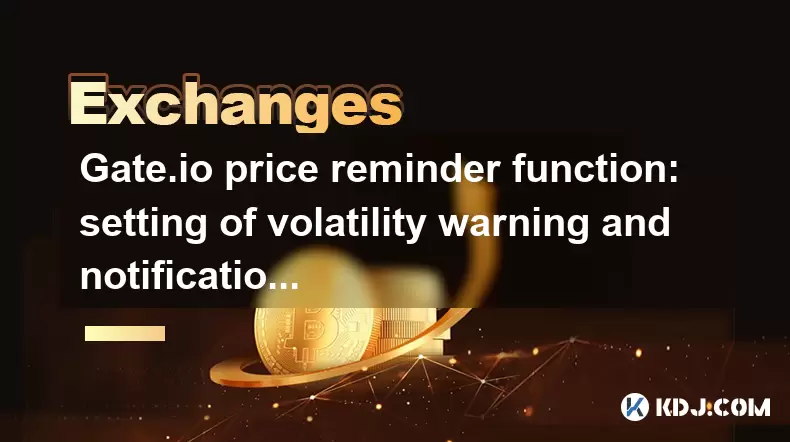
Gate.io price reminder function: setting of volatility warning and notification method
Jun 14,2025 at 06:35pm
What is the Gate.io Price Reminder Function?The Gate.io price reminder function allows users to set up custom price alerts for specific cryptocurrencies. This feature enables traders and investors to stay informed about significant price changes without constantly monitoring market data. Whether you're tracking a potential buy or sell opportunity, the p...

Gate.io trading pair management: tutorials on adding and deleting watchlists
Jun 16,2025 at 05:42am
What Is a Watchlist on Gate.io?A watchlist on Gate.io is a customizable feature that allows traders to monitor specific trading pairs without actively engaging in trades. This tool is particularly useful for users who want to track the performance of certain cryptocurrencies or trading pairs, such as BTC/USDT or ETH/BTC. By organizing frequently watched...

Gate.io DEX connection tutorial: detailed explanation of decentralized trading operation steps
Jun 12,2025 at 08:04pm
Connecting to Gate.io DEX: Understanding the BasicsBefore diving into the operational steps, it is crucial to understand what Gate.io DEX is and how it differs from centralized exchanges. Unlike traditional platforms where a central authority manages user funds and trades, Gate.io DEX operates on blockchain technology, allowing users to trade directly f...

Gate.io account backup suggestions: precautions for mnemonics and private key storage
Jun 12,2025 at 10:56am
Understanding the Importance of Mnemonics and Private KeysIn the world of cryptocurrency, mnemonics and private keys are the core elements that grant users ownership over their digital assets. When using Gate.io or any other crypto exchange, understanding how to securely manage these components is crucial. A mnemonic phrase typically consists of 12 or 2...

Gate.io lock-up financial management tutorial: steps for participating in high-yield projects and redemption
Jun 13,2025 at 12:43am
What Is Gate.io Lock-Up Financial Management?Gate.io is one of the world’s leading cryptocurrency exchanges, offering users a variety of financial products. Lock-up financial management refers to a type of investment product where users deposit their digital assets for a fixed period in exchange for interest or yield. These products are designed to prov...

Gate.io multi-account management: methods for creating sub-accounts and allocating permissions
Jun 15,2025 at 03:42am
Creating Sub-Accounts on Gate.ioGate.io provides users with a robust multi-account management system that allows for the creation of sub-accounts under a main account. This feature is particularly useful for traders managing multiple portfolios or teams handling shared funds. To create a sub-account, log in to your Gate.io account and navigate to the 'S...

Gate.io price reminder function: setting of volatility warning and notification method
Jun 14,2025 at 06:35pm
What is the Gate.io Price Reminder Function?The Gate.io price reminder function allows users to set up custom price alerts for specific cryptocurrencies. This feature enables traders and investors to stay informed about significant price changes without constantly monitoring market data. Whether you're tracking a potential buy or sell opportunity, the p...

Gate.io trading pair management: tutorials on adding and deleting watchlists
Jun 16,2025 at 05:42am
What Is a Watchlist on Gate.io?A watchlist on Gate.io is a customizable feature that allows traders to monitor specific trading pairs without actively engaging in trades. This tool is particularly useful for users who want to track the performance of certain cryptocurrencies or trading pairs, such as BTC/USDT or ETH/BTC. By organizing frequently watched...
See all articles

























































































